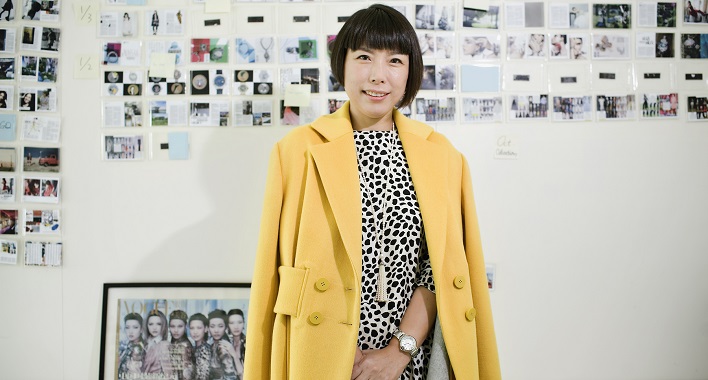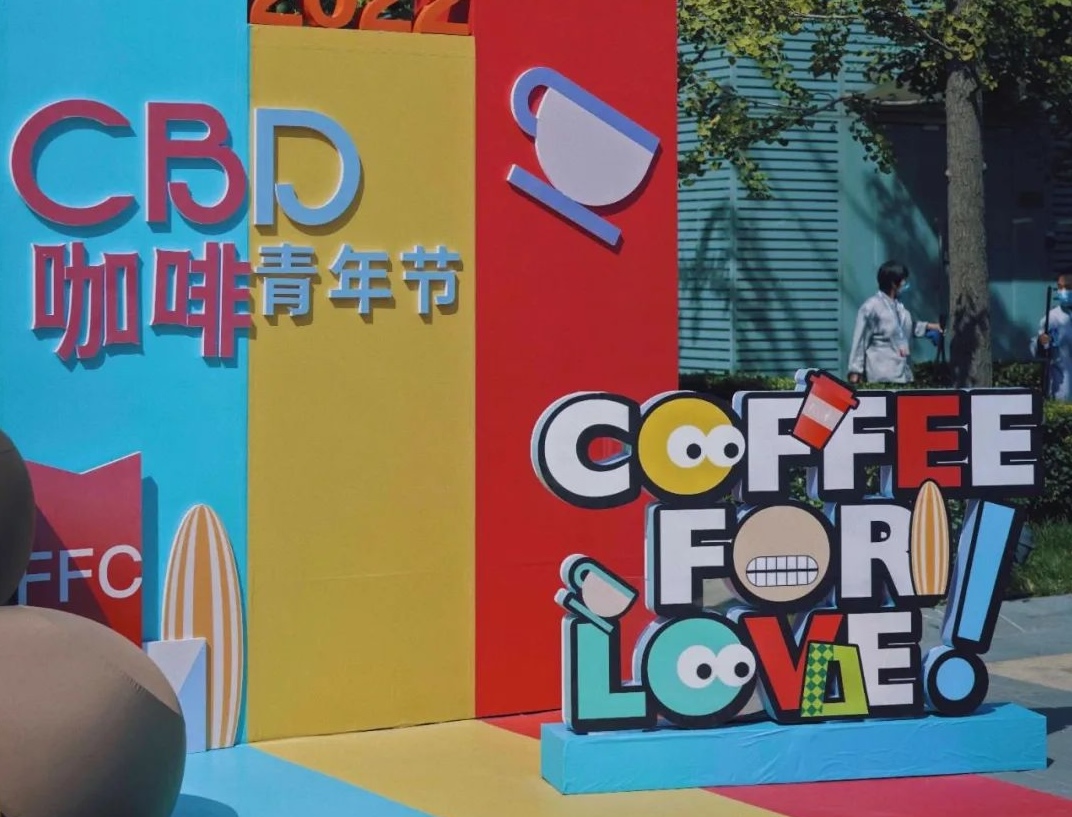If American Vogue editor Anna Wintour has a reputation for being intimidating, then Angelica Cheung should be doubly so. As the editor-in-chief of Vogue China (the youngest to cover such a role for Condé Nast's glossy title), Cheung presides over a publication whose readership is greater than British, French, Italian and German vogue combined.
Since launching the title in 2005, Cheung has built from scratch one of the title's most dynamic and international editions. In the midst of a print media crisis that has pitted publishers against each other in a to-the-death fight for advertising ink, Cheung's magazine needs to continually increase editorial volume to keep up with advertising demands.
It is so popular in fact, that Cheung has been forced to add 12 supplements a year to the monthly publications. Then, of course, there are the rising number of digital products – iPad editions, WeChat subscriptions, mobile apps and the like.
"People have this image of me as 'daunting,'" she says, beckoning me to sit down, from behind her desk. "But once you get to know me, you realize I’m pretty nice."
It's 8.45 on a Monday morning, and unsurprisingly, Cheung is the first one to arrive at Vogue's Beijing office – a sleek, airy open space in the capital's Central China Place.
Framed by her renowned asymmetrical, sharp black bob – a style she's had for 14 years – there's a refreshing frankness about her that, while not necessarily 'nice', is certainly unaffected.
"I am not in it for the glamour," she says. "Those who are don't last very long. And I am not a 'fashionista.' I'm in it for the ride – the people you meet, the things you achieve, the reach you have. I look at the business with an objective perspective. That's what has given me an edge compared to other editors."
That edge has seen Cheung move beyond the rarified confines of the media and fashion worlds to become something of a spokesperson for modern Chinese women. As much of a tastemaker as a businesswoman, Cheung has set a new bar for fashion in China. If sophisticated Chinese women in first tier cities now know their Haider Ackermann from their Balmain and aspire to a more individualistic code of dress, it is – at least in part – because of her.
But Cheung has also helped put Chinese designers and models on the international stage. The Met's show China: Through the Looking Glass, currently the museum's most successful exhibition to date, wouldn't have been possible without her support and ambassadorship.
As she quite bluntly puts it, "the whole industry in China only started when I started the magazine. It took 50 years for Europe to build this. It took us less than a decade."
They key behind such unrelenting success is commitment, she says.
"I've always been dedicated to anything I’ve set my mind to. Once I decide to do something, I stick with it 100 percent. I’ve done the same with Vogue.”
Born in Beijing in 1966, the daughter of a Chinese diplomat, Cheung grew up during the country's Cultural Revolution.
While that experience was painful for many older Chinese people, Cheung's memories of the time are mostly light-hearted. "It was a very normal childhood, just like any other," she recounts. "We spent it learning from Lei Feng [the orphan-turned-model-soldier who darned his fellow soldiers' socks late at night and was eventually killed by a falling telegraph poll], sweeping the streets with brooms, stopping buses on the road to clean the windows, studying from Mao's Little Red Book. It was hard on many, no doubt about that. But for us kids, it was kind of fun.”
That childhood ended as Cheung finished elementary school, during the beginnings of China's reform and opening up in 1978. She and her peers were the first to compete in the newly introduced examinations, giving her a firmer guarantee of a university place.
"My mother really pushed me to take my studies seriously then," she says. "She was quite the tiger mum." For one year, watching television and reading novels were banned. Every day after school, she would have to spend hours memorizing historical dates, names and locations of rivers and mountains.
The hard work paid off. Cheung – who had been exposed to English since infancy and attended an English-language middle school – ended up enrolling at Beida, often described as China's top university.
She remembers those years with fondness. "My Beida classmates and I were the last generation of idealists in China," she says. "And that still seeps into the way I approach my work today."
She studied English literature and law and received an MBA from the University of South Australia. Her goal, she says, was that of becoming a lawyer. "I was convinced I was going to pursue a legal career. Up until I launched Vogue, working in media was just a means to broaden up my experience, my knowledge of the world."
She entered the publishing industry after moving to Hong Kong in the early 1990s, following a stint in the corporate and business sector.
"The plan was for me to go to America, like everybody else did at the time, to further my law studies," she says. "But I decided to take a 'gap year' in Hong Kong. I wanted to meet different people and expose myself to a wide range of realities. Working in business didn't really enable me to do that, however. So I decided to have a go at journalism."
The first publication to offer her a shot was the Eastern Express, an English-language newspaper, covering culture arts, fashion and lifestyle.
Always striving to stand out from the throng, her breakthrough feature was a profile series on young, successful Mainland Chinese in Hong Kong. "I did it at a time when popular culture used to represent mainlanders as uncouth, gold-diggers, peasants," she recalls.
"It was a bold editorial decision. It got people thinking about China and the possibilities it held in a new light."
Cheung continued working on all aspects of life in the former British colony in the run-up to the handover to the PRC in 1997. Her writing landed her a position as executive editor for the lifestyle features of daily newspaper Hong Kong iMail, which she helped launch.
But getting back into law remained her focus. "Throughout those years, I never really stopped studying." Media job offers kept popping up, however, and in 2001 Marie Claire Hong Kong hired her as Editor-in-Chief. Two years later, she moved to Shanghai as editorial director of Elle China.
"It was all supposed to be temporary," she laughs. "I kept giving myself one, or two years in each job."
The call to edit the launch of Vogue China came in 2005. At first, Cheung almost sneered at the opportunity. "Condé Nast reached out at a time when I was seriously considering leaving the industry," she says. "I thought I'd had enough of fashion magazines. They said 'But it's Vogue.' And I replied, 'yeah but it's still another glossy.' And then it was something they said — 'You are going to regret it if you don't.' It got me thinking. I started delving further into the publication, and realized I'd have the world's top resources to bring to China. So I took the job – again, with the plan to leave after the launch."
Up until then, international titles still saw China as a crass backwater with no real potential for a well-read audience. Many magazines would simply syndicate and translate materials from their foreign counterparts.
"But Condé Nast wanted to do something different. They were looking for original content. It dawned on me that I could create something entirely new."
And she did.
In September 2005, only six months after taking the job, Cheung released Vogue China's first issue, with an initial run of 300,000 copies. It sold out almost instantly, leading to a second printing. Circulation climbed quickly, and ad sales took off.
On the cover was model Du Juan, who went on to become the first Chinese supermodel and hugely famous in her own right.
But getting there proved quite hard. "Nobody knew me internationally," says Cheung. "Nobody had set foot here before. The general idea was 'It's China. They have money but no taste.' I had to project a high level of confidence in what we were doing to earn the respect of the industry and change that attitude. The challenge made it interesting."
At the time, China's domestic fashion industry was still finding its feet. The country did not have homegrown internationallevel photographers, stylists or models, and understood little about how they worked. Aiming to make a Vogue that matched international standard, Cheung brought foreign talent on board – French fashion photographer Patrick Demarchelier and Carine Roitfeld, former editor of French Vogue, as stylist. Similarly, however, these fashion luminaries also understood little about China.
"There was a very orientalist vision of the country," says Cheung. "Or too European, if you'd like. All these people knew were Wong Kar-wai movies, Maggie Cheung and Zhang Ziyi. Naturally, they wanted to show an image of beauty rooted in the past, and shoot the models wearing 'exotic' costumes in some 'ancient' location. I had to act quite diplomatically to make them see these were stereotypes. It wasn't easy."
"Another problem was that no one wanted to shoot Chinese models," adds Cheung. "This was of course 10 years ago. Many photographers didn't know these girls, so they genuinely didn't have a feel for them. Creatively, they didn't know how to tell their story, emphasize their beauty or establish a relationship."
"I remember asking Anna [Wintour] to help me organize a breakfast meeting with all the model agencies and casting directors in New York, urging them to employ Chinese models at fashion week, so that the industry could get used to them. It was a first, like so many other things we've done."
A decade later, and most of these models – Ming Xi, Liu Wei, Feifei Sun – have become common fixtures of the fashion circuit, so much so that they often no longer have time to shoot for Cheung.
Shunning cliché and transplanted Western ideals, Cheung has strived to show fashion’s upper echelons the real needs of Chinese readers. For the first few years, Cheung treated Vogue China almost as a textbook, deconstructing trends and explaining fads, cultural icons and style movements from the very beginning to a readership raised with only the magery of Mao suits.
Her advice is now sought by CEOs and international designers working to establish businesses in China. But in recent years, Cheung has sought to tone down the magazine's focus on clothes, concentrating instead on women with whose work and character readers can empathize and learn from.
Cheung credits the changes in editorial direction to the birth of her daughter eight years ago. "After Hayley was born, I started thinking about the kind of woman I hoped she would become: stylish, but not a slave to fashion; socially aware, happy, brave and loving."
The magazine currently runs at 300 editorial pages each month, in comparison with American Vogue's approximately 100 pages of editorial copy. "I like to feel we are more than a fashion magazine," she explains. "I am talking to working women, not just fashion-obsessed girls. It's difficult to keep going for ten years if you only try to sell bags and shoes. You have to give a meaning to what you do."
To make it onto the magazine's cover – which has been graced by Kendall Jenner, Karlie Kloss, Liu Wei and, in the latest September issue, 10 A-list Chinese actresses shot by Mario Testino – Cheung requires her subjects to fit the idea of a 'Vogue woman': positive, successful, self-confident, ahead of the trends.
"I want to preach to my readers that they can have it all," says Cheung, before adding the caveat, "if they want."
In the case of Cheung, that want translates into hard fought desire. A typical day will see her wake up at 6.30am to personally take her daughter to school, before traveling across town to the office – where she is always the first to walk through the door, "so that I can enjoy the calm before the storm."
She takes visitors and calls with New York until about 11am, then spends the rest of the day on internal editorial issues. In the afternoon, she meets with staff – many of whom queue outside her office, in hope of securing some muchprized face-time. She leaves the office 'early,' at five or six, to make sure she's there when Hayley does her homework. Dinner is with her daughter and her husband Mark. Once Hayley goes to bed, she resumes work. She sticks to a strict policy of attending one, maybe two business dinners per week, and never travels for events. She never does talk shows, and purposely stays away from the limelight.
When she has to travel for work – four months of the year for business and fashion weeks – she tries to bring her family if it's for longer than three days, so that they can maintain a routine. "I'm a normal working parent, and I make my best to make it work," she says.
But, as we chat more about her schedule, it is clear that running the most successful Vogue in the world requires more than 'normal.'
The 49-year-old lives on five hours sleep. She can go all day without eating, because "I'm just busy thinking of work things." Often, she tells me, she schedules overnight flights so that she can get to Paris or London in the morning, go to meetings, and then leave again in the evening for the next destination. "I see no point in spending the night in a hotel if I could be traveling while sleeping. If I have an extra hour, I always, always try to squeeze in another meeting."
Breaking away from the magazine is hard, she says. She doesn't sleep well as her mind is constantly preoccupied with the next project. "I am a natural worrier. I never stop thinking about work. Sometimes I'll have a new idea, often while I sleep. It's hard for me to switch off. My husband says I am lot better than before, but then there’s the digital side of the business… I always think there's a better way to do things, improve what we're doing." She pauses. "You are married to the job, in a way. And you either go full speed, or you do something else."
Anna Wintour, Cheung says, is the same. "We have this energy that drives us. The willingness to get the job done. To put in the extra effort. Always."
Comparisons to her American colleague have been made since Cheung started off at Vogue. She has been dubbed the Wintour of China. I ask her if the association bothers her. "No, not at all. Few things annoy me in life. I think it's just a way for people to better understand who I am," she says. "Rumors, gossip, negative comments. They don't matter. I don't read rubbish on the Internet. I need to be informed, of course – I take good criticism. The rest is just fluff."
As an editor, her biggest concern remains how best to bridge the gap between China and the rest of the world. "We've made tremendous progress, but there's still a lot of work to do. I don't see as many Chinese models as I'd like on the runway. Same for Chinese designers. I am proud of my heritage and what I really want is for more people [in the industry] to really understand the country that makes up 50 percent of their business."
The West’s recent awakening to China’s fashion power – with the Met show, the 'China issues' many international titles have started to release, the many brands staging exclusive catwalks in the PRC – is something she takes positively, if with a pinch of salt. "What matters is that people are aware of us," she says. "Although of course, the day our economy is down, as is the case now, we might just disappear from their radar. That's why it's so important to really grow our sophistication and show our creative potential in an international way."
Could she do that anywhere else apart from Vogue? “I don't think so. Working at Vogue, you learn to deal with everybody – from celebrities to cobblers. It gives you the scope of doing different great things within the same role. There's nothing I would change. And we are only at the beginning," she says.
"My biggest satisfaction is to have brought us here. So many people thought we were going to fail. I thought we stood a chance. And look how far we've come."





















0 User Comments